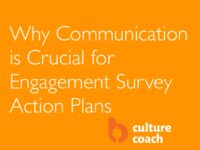Laura Freeman, PhD is the CHRO at Orgill, Inc, a 7400-person organization that has 8 hardware distribution centers and 144 retail hardware locations. Her expertise includes developing and implementing HR strategies that support business plans and operational objectives with several Fortune 500 companies. Here, she discusses a number of new initiatives she’s leading to build on Orgill’s long history of success.
What’s something new you or your team is focused on in 2023?
Laura: Orgill is a 176 year-old company that has seen explosive growth over the last 10 years. I joined at the beginning of 2023 as their first CHRO and so we’ve been focused on a lot of “new” so far this year!
“How do we meet employees where we need to?” is a question guiding much of our work right now that touches a number of areas.
- Compensation: are we aligned and competitive not just with wages but incentives as well? How can we build on our incentives to drive business strategy and better link incentive to business impact? With 4 generations in the workforce, are our benefits still attractive?
- Culture: what does our organization stand for? Community involvement, DEI, and how we bring values to life everyday. are we effectively connecting individual contribution to company purpose and outcomes?
- Career development: what are we offering? How quickly are we able to show career paths? We’re finding younger generations in particular are not waiting around. What can team members take the initiative to do on their own? How do we do talent reviews and prepare Managers for these conversations?
- Retention: we can’t do everything today but have a clear roadmap on where we need to be.
What’s your organization’s remote work policy?
Our team members who work in distribution centers and retail stores are required to be onsite 5+ days per week so they are ineligible for remote work.
At our headquarters, we don’t have a defined remote work policy and leave it up to the manager. Although it’s not formalized, we typically see 2 days remote and 3 days in the office.
Related: The Biggest Challenge of Remote Employee Engagement
We know the benefits of remote work. What are your top 3 challenges with it so far?
How do you incorporate new hires into the culture and have them understand, feel, and experience it? How do you help everyone build relationships and belonging?
Another challenge is helping Managers understand how to manage remotely. It’s not the hours spent in an office, but rather what needs to be accomplished in a reasonable timeframe? This also ties in with culture – how are we equipping Managers to engage their teams virtually?Another is to change mindsets.
Especially for remote ineligible roles, how can we support greater flexibility? As long as we have coverage, we’re going to try and help team members work schedules they prefer – whether that’s 10-hour days 4x per week or the typical 8-hour day 5x per week. To manage differently.
What’s different about Employee Experience in 2023?
I’ve found there is much greater emphasis on career development from the outset and I’m seeing questions around this being asked at the interview stage and once they get onboarded.
Another is a more intentionality from employees and organizations around belonging. What are you doing from an employee resource group or DEI perspective? How are we helping employees bring their whole selves to work? How are we valuing and recognizing employees for who they are?
Personally, I also think more pay transparency is on the horizon driven by regulation and candidates.
I think we are settling into a work-life “blend” (vs. balance). Irrespective of remote eligibility, the more flexibility there is the less fixed I think the boundaries between work and life are.
For organizations with large frontline populations, one of the challenges remote work creates is the “haves” and “have nots”. What are some ways organizations might address this?
If you have frontline employees who are not eligible for remote work, you always have to think about this. At our distribution centers or retail stores, no one works remotely but management still has flexibility.
For example, if they have an appointment, they can run out or maybe we organize shifts to accommodate different desired options. We recently had two distribution centers pilot a 4 10-hour day model because out workforce asked for it and it’s going well.
Frontline employees are also difficult to reach and this is an area we’re focused on improving as well. How we are meeting them where they are to get them the information they need when they need it? How are we showing appreciation and calling out great work beyond the huddles? We’ve recently installed digital signage in multiple areas outside the breakroom and have seen some improvements with that – we hope to build on these in 2023 and beyond.
Do you have a rewards program? Tell us about it.
Generally speaking I’d say the closer a high frequency reward is to business output the better.
- Distribution centers focused mostly on quality and production time with a weekly bonus
- Retail stores it’s usually sales and profit and done quarterly
- Sales is based on commission and paid monthly
- Corporate is yearly incentive based on business metrics defined at the beginning of the year
We used to have non-cash awards but sunset them as they weren’t received well or effective for us. We’re looking at other things we can do besides cash like a community event, extra time off, etc.
Another way we recognize people is connected to talent development through certifications and we will be looking at ways we can award a badge or other form of recognition upon completion.
Related: 4 Ways to Start Recognizing Employees
How is your organization leveraging engagement surveys today?
For the last 35 years we’ve been working with a provider who conducts an annual survey. We’re planning to supplement with pulse surveys as we build out that capability.
Related: How to Make Better Employee Pulse Surveys | Bonfyres
What is the post-survey action planning process like at your organization?
We review the results and identify 1-2 areas of focus – starting at the company level and cascading down throughout the organization. For example, our VP of Operations will get the management team and HR team together at each distribution center and go through the exercise.
What applications do you see for AI in HR?
I see benefits in leveraging AI to predict turnover and engagement scores by combining employee survey responses with other data sources as well as looking at health data to predict where claims will be for example.
However you use AI, you have to make sure employees understand it and that you’re transparent about it. But no question about it, AI is here to stay.



 6 min
6 min




